Books
Here are a few books to help in your research. Ask your teacher, librarian, or parent if you have any trouble finding these materials.
Rosie the Riveter: Women Working on the Home Front in World War II
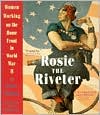
Colman, Penny. Rosie the Riveter: Women Working on the Home Front in World War II. New York: Crown Publishers, 1998. Ages 9-12.
What did women do when men went overseas to fight during World War II? They joined the work force, which was something women did not do very oftne prior to the war. This book gives a history of the women in the work force during World War II. It includes many photographs to illustrate life during the war.
World War II Days: Discover the Past With Exciting Projects, Games, Activities, and Recipes
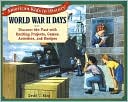
King, David C. and Cheryl Kirk Noll. World War II Days: Discover the Past With Exciting Projects, Games, Activities, and Recipes. American Kids in History. New York: Jossey-Bass, 2000. Grades 4-6.
Learn about life during World War II through the eyes of two fictitious families in San Francisco and Minnesota. You can make crafts while learning facts about life on the home front during World War II. See how life differs in two different parts of the country during this time!
World War II For Kids: A History With 21 Activities
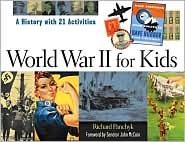
Panchyk, Richard. World War II For Kids: A History With 21 Activities. Chicago, IL: Chicago Review Press, Inc., 2000. Ages 9-12.
This book provides an interactive history of World War II with 21 activities for students to participate in while learning about the war. Kids will learn about events that took place on the battlefields as well as back home in America.
Doing Our Part: American Women on the Home Front During World War II

Sinnott, Susan. Doing Our Part: American Women on the Home Front During World War II. New York: Scholastic, 1995. Grades 4-8.
Take a look at how Americans' lives changed when so many men left the country to fight in World War II. Women's roles changed a great deal and they had to fulfill different roles in society. They had to take over a great deal of the work. See how American life changed through pictures.
Meet Molly: An American Girl
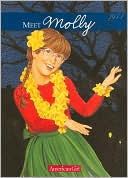
Tripp, Valerie. Meet Molly: An American Girl. Illustrated by C. F. Payne. Vignettes by Keith Skeen and Renee Graef. Middleton, WI: Pleasant, 1986.
Nine-year-old Molly is living in the United States' home front during World War II. Her father, a doctor, is off taking care of soldiers overseas and her mother is working for the war cause. Everything is changing and Molly misses her old life. She keeps things lively, however, by playing tricks on her older brother Ricky.
Molly Learns a Lesson: A School Story
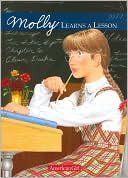
Tripp, Valerie. Molly Learns a Lesson: A School Story. Illustrated by Nick Backes. Vignettes by Keith Skeen and Renee Graef. Middleton, WI: Pleasant, 1986.
Molly's school is involved in a Lend-a-Hand contest to help out the war effort. Molly wants to make sure her third-grade girls beat the third-grade boys. When she and two of her friends decide to create their own project instead of sticking to the rest of the girls' plan, they take it too far and learn valuable lessons about working as a united force to help the war effort.
Molly's Surprise: A Christmas Story
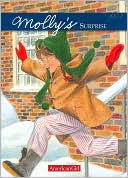
Tripp, Valerie. Molly's Surprise: A Christmas Story. Illustrated by C.F. Payne. Vignettes by Keith Skeen and Renee Graef. Middleton, WI: Pleasant, 1986.
Christmas is coming, but it will be a difficult year with Molly's father away. She and the family try to do things as they have in the past, but resources are scarce and Molly knows that she will not get anything but practical gifts this year. She is also worried that she will not receive anything from her father. However, a surprise comes just in time to spread holiday cheer.
Happy Birthday Molly!

Tripp, Valerie. Happy Birthday Molly! Edited by Jeanne Thieme. Illustrated by David Gaadt. Middleton, WI: Pleaseant, 1987.
An English girl comes to stay with the McIntires just before Molly's tenth birthday. While the girls do not hit it off, Molly discovers that she and Emily have more in common than she thought. Emily is worried about her family in London, where fighting is taking place, just as Molly is worried about her father overseas. They throw an English tea party for Molly's birthday.
Molly Saves the Day

Tripp, Valerie. Molly Saves the Day. Edited by Jeanne Thieme. Illustrated by Nick Backes. Middleton, WI: Pleasant, 1988.
Molly and her friends spend time at Camp Gowonagin in teh summer and have a glorious time. Molly is worried, however, when her friends are on the other team for the all-camp Color War. Will this ruin camp, or can Molly save the day?
Changes for Molly
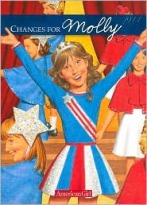
Tripp, Valerie. Changes for Molly. Illustrated by Nick Backes. Middleton, WI: Pleasant, 1988.
Molly's father is coming home! He will arrive just in time to see Molly tap dance in the town's big Red Cross show. She wants to look more sophisticated and grown-up than she did the last time her father saw her, so her sister helps Molly out. However, Molly gets sick right before her father arrives. Luckily, he gets there in the nick of time to make everything better.
Children of the World War II Home Front
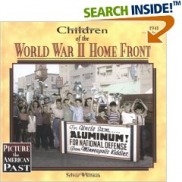
Whitman, Sylvia. Children of the World War II Home Front. Minneapolis, MN: Carolrhoda Books, 2000. Ages 4-8.
What was life like for children during World War II? This book explores the life of American children during this time, from air raid drills and rationing food to planting Victory Gardens and writing letters to soldiers. It includes lots of great pictures too!
V is for Victory: The American Home Front During World War II
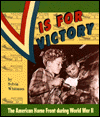
Whitman, Sylvia. V is for Victory: The American Home Front During World War II. Minneapolis, MN: Lerner Publishing, 1992.
Learn about the American home front during World War II. This book can tell you about civil defense, rationing, propaganda, and censorship. See what life was like under these circumstances!
